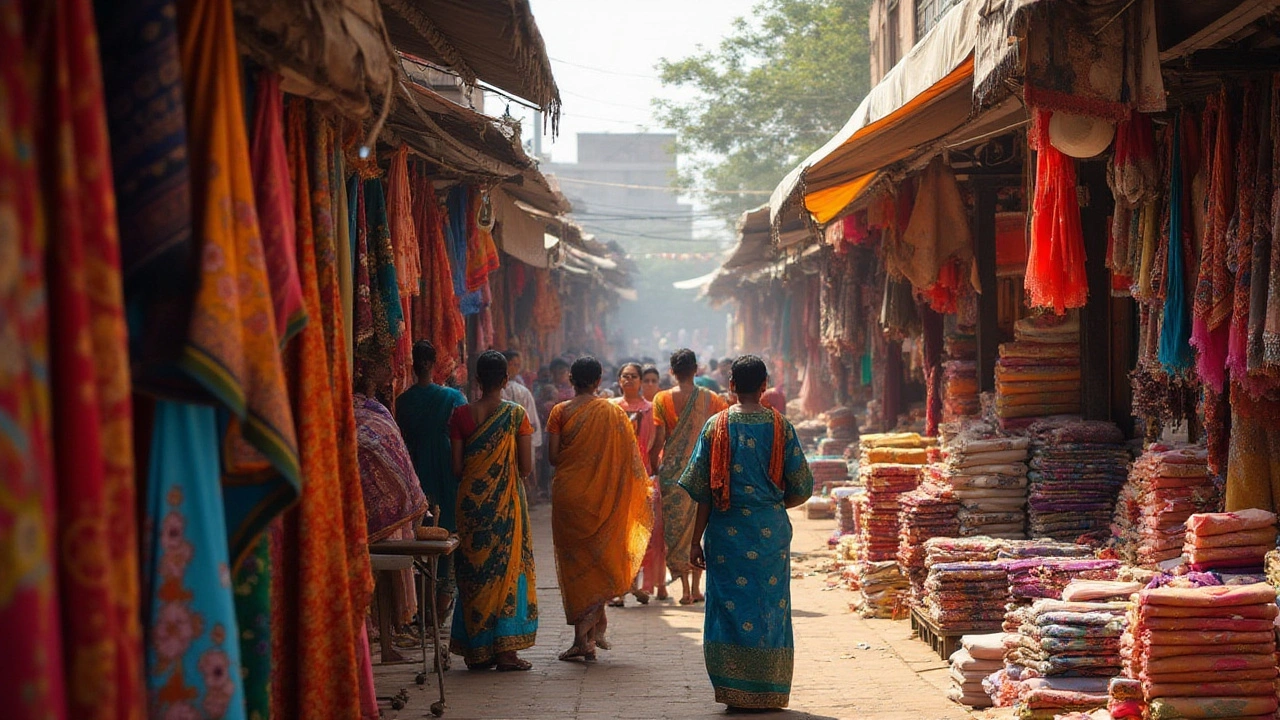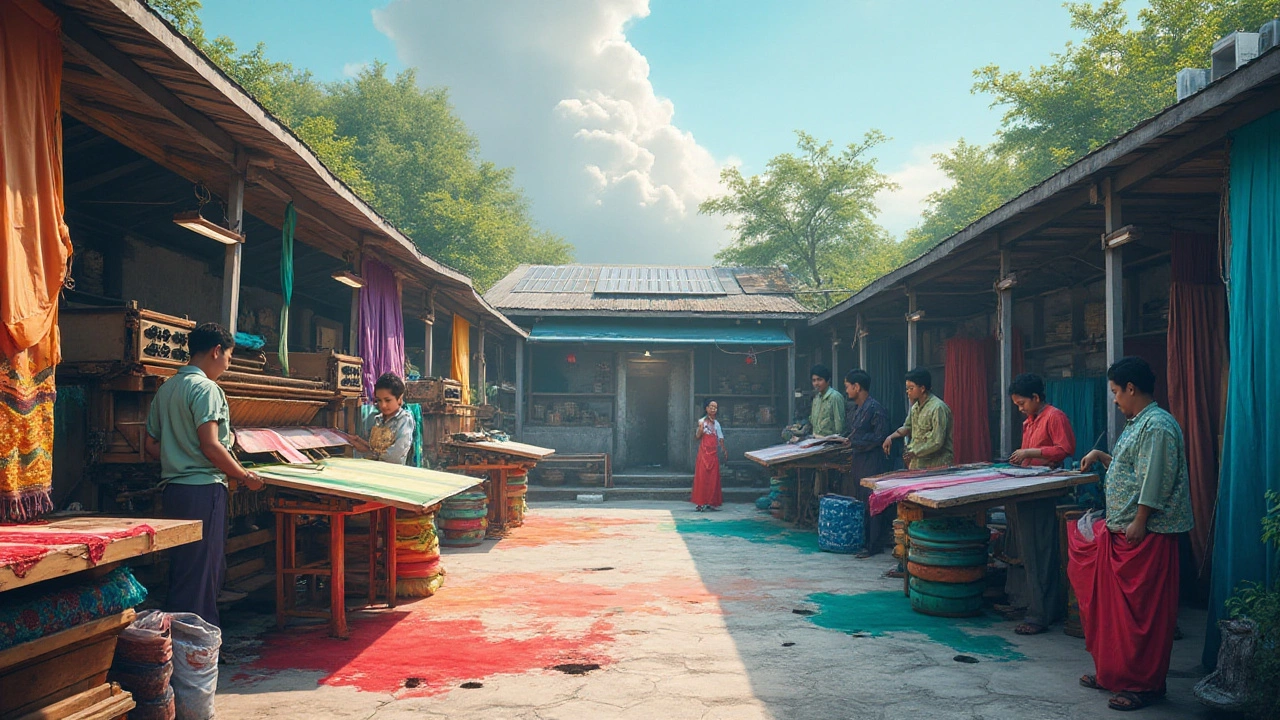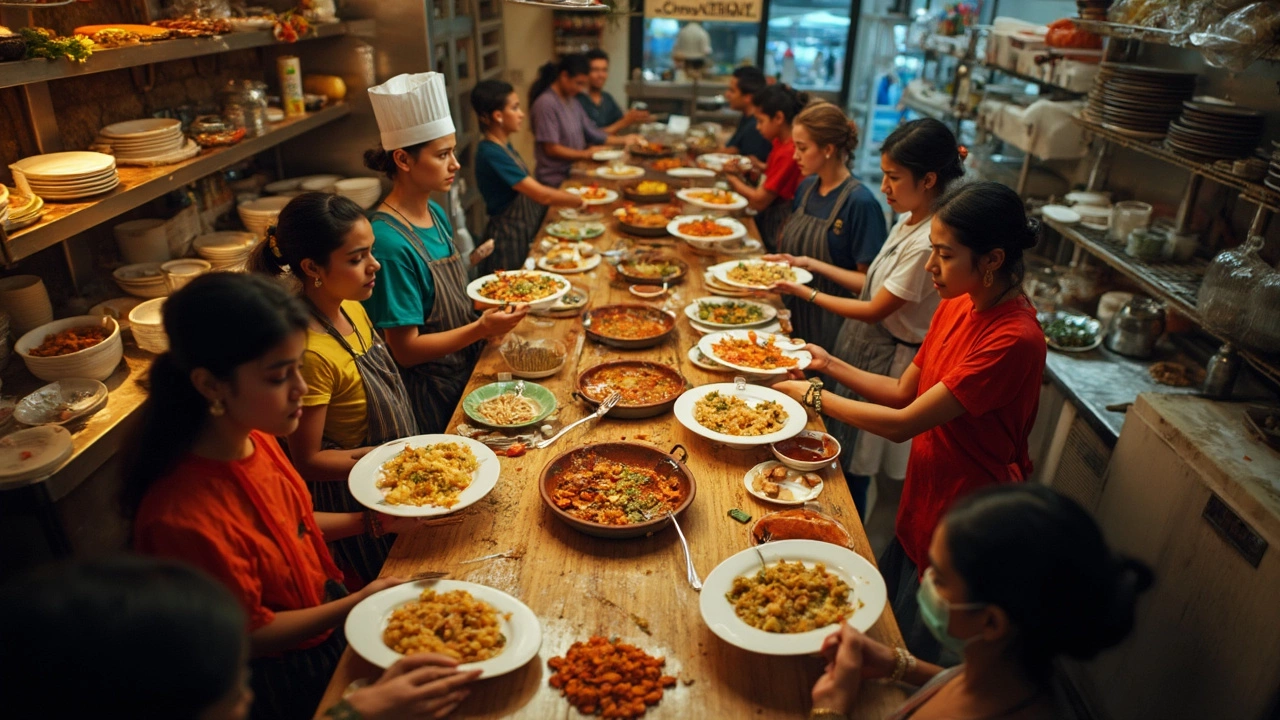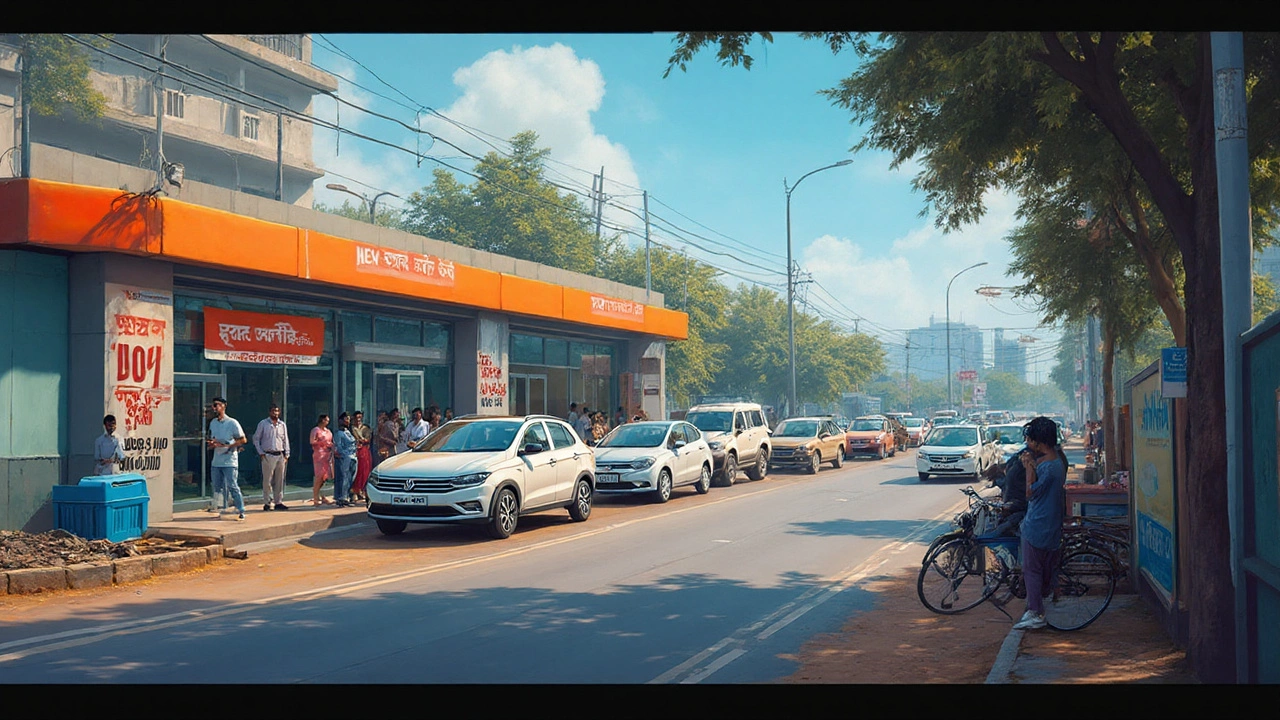Is India Set for a Textile Industry Revival?

The textile industry in India is like a vast tapestry woven with centuries of history and tradition. The nation's rich fabric legacy is renowned worldwide, drawing admirers from corners far and wide. Yet, the question remains whether it's on the brink of a new golden era.
As we navigate this vibrant landscape, it's essential to explore how innovation, policy, and sustainability are coming together to shape the future of Indian textiles. With a focus on these elements, we can begin to understand where the industry is heading and what it means for those who place their hopes and dreams amidst the looms and threads of this dynamic sector.
This exploration will delve into the critical factors at play, offering insights and perspectives on the potential revival of the textile industry in India. It's an exciting time to reimagine what lies ahead for a sector so integral to India's cultural and economic fabric.
- Historical Significance of Indian Textiles
- Technological Advancements and Innovations
- Government Policies and Initiatives
- Sustainability and Eco-friendly Practices
- Challenges and Future Prospects
Historical Significance of Indian Textiles
Indian textiles have always held a special place in the tapestry of global fabric history. From ancient times, the subcontinent was a beacon of exquisite textile craftsmanship, famed for its vibrant colors, intricate designs, and fine fabric textures. The allure of Indian textiles dates back to the Indus Valley Civilization, where archaeological digs have unearthed fragments of woven and dyed cotton. Fast forward a few centuries, and Indian textiles became highly sought commodities on the Silk Road, cementing themselves as luxury goods favored by elite circles across Europe and Asia. The fabled muslins of Bengal, so fine that they were called 'woven air,' dominated the fashion circuit during the Mughal era, showcasing India's historic role in fabric creation and exportation.
During the medieval period, Indian textiles were not just goods, but anchors of cultural exchange, facilitating interactions among people and giving India an edge in international trade. The interaction between Indian artisans and traders from places like Persia, China, and Europe influenced styles and techniques, leading to a fusion seen in various textile forms such as the infamous block-printed calicoes and chintz. This cross-pollination of ideas tremendously enriched the textiles produced, making them more desirable and varied than ever before. The arrival of the British East India Company marked another critical epoch, as demand for Indian cotton skyrocketed, playing a pivotal role in Europe's industrial revolution while also affecting local economies profoundly.
Having weathered the tides of colonial rule, the cultural richness and diverse skill that underscore Indian textile heritage are palpable today. The industry, with its extensive lineage, was foundational to India's economy even post-independence. The varied techniques, including resist dyeing practices like Bandhani and tie-dye, showcase the innovation and tradition combined. In the words of Indian historian Romila Thapar, "Textiles form the cultural fabric of history itself." This statement captures how deeply entwined textile production is with India's social and economic heritage. The legacy continues to influence contemporary designs, where traditional motifs find a new voice through modern interpretations.
Even now, Indian textiles continue to inspire fashion globally. They are exemplified by the resurgence of artisan-driven movements that promote sustainability and craftsmanship. Initiatives that emphasize 'handmade in India' are gaining traction, as consumers worldwide seek authentic, ethically made products. From earthy khadi to rich handloom saris, the enduring appeal of Indian textiles reflects a journey through time, blending heritage with contemporary trends and sustaining a tradition that contributes to the fabric of human culture itself.
Technological Advancements and Innovations
In the heart of the textile industry India, a quiet but profound transformation is underway, driven by an embrace of cutting-edge technology and creative innovations. Indian textile manufacturers are beginning to integrate advanced technologies that have been game-changers, allowing them to enhance production capabilities, improve quality, and reduce waste. Automation in textile production has become more widespread, with smart machines taking over complex labor-intensive processes. This shift not only boosts efficiency but also ensures consistently high-quality outputs. The advent of technologies like AI-driven pattern recognition offers precise and intricate design capabilities that were once beyond imagination, delighting both manufacturers and consumers alike.
Beyond automation, innovations in materials science have introduced textiles with smart properties – fabrics that change color, conduct electricity, or even adjust their permeability based on environmental conditions. Such advancements are expanding the applications of traditional textiles far beyond conventional clothing. These high-tech fabrics are now finding their way into health, sports, and military applications, opening new markets and opportunities for Indian textile producers. The integration of 3D printing in textile design has also started to take root, with designers experimenting with structures and patterns that push the boundaries of imagination.
"Innovation in textiles is not just about improving what we have, but about reimagining what we can create," says a leading researcher at the Textile Research Institute of India.Digital platforms are another pivotal technology gaining traction. Platforms that provide end-to-end supply chain visibility are helping manufacturers manage resources more effectively, cutting down transportation times, and reducing costs. Blockchain technology is also being tested to ensure transparency and authenticity, which is increasingly important for brands focusing on sustainably sourced materials.
The technological renaissance isn't limited to production. With the digital fashion trend, virtual reality (VR) and augmented reality (AR) are becoming instrumental in marketing and selling textiles. Imagine virtually trying on garments from the comfort of your home; that’s the magic of synergy between textiles and technology. Such innovations not only enhance customer experience but also enable brands to reach a global audience without the traditional retail overheads.
It's an exhilarating time for those embedded in the world of Indian textiles market. As these technologies continue to evolve, they offer both opportunities and challenges. The companies nimble enough to adapt and foresee the shifts are the ones likely holding the key to thriving in this rapidly changing landscape. The marriage of technology and textiles promises to weave a rich tapestry of future possibilities, potentially heralding a new age of prosperity for the industry.

Government Policies and Initiatives
The Indian government has introduced several strategic policies aimed at boosting the textile industry in India. Recognizing the sector's substantial potential both domestically and globally, these initiatives focus on technological enhancement, workforce skill development, and infrastructure improvements. The emphasis is on making the industry more competitive, sustainable, and aligned with global standards.
One such policy is the National Textile Policy, which aims to increase exports and generate employment opportunities. The policy outlines a roadmap to position India as a global textile and apparel manufacturing hub by leveraging its Indian textile growth. Key objectives include investing in advanced technology and innovation, reducing production costs, and enhancing product quality. In addition, the government has been facilitating ease of doing business by streamlining regulatory processes and providing fiscal incentives.
Support Through Schemes and Subsidies
Programs such as the Technology Upgradation Fund Scheme (TUFS) have been instrumental in supporting textile manufacturers. TUFS provides financial assistance for upgrading machinery, enabling manufacturers to embrace modern technologies, thus improving efficiency and reducing production wastage. The scheme also addresses environmental concerns, promoting energy efficiency and sustainable practices, which is increasingly vital in today's market environment. As a result of such policies, the textile sector is poised for substantial growth.According to the Confederation of Indian Textile Industry, "The government's proactive approach and timely interventions hold the promise of unprecedented growth and global competitiveness for the Indian textile sector."
Another initiative, the Scheme for Integrated Textile Parks (SITP), facilitates the development of world-class infrastructure. This scheme aims to establish integrated parks with adequate infrastructure, common facilities, and modern amenities. By bolstering infrastructure, the scheme aids in reducing logistical hurdles, thereby enhancing the sector’s appeal to both domestic and international investors.
Employment and Skill Development
Realizing the crucial role of a skilled workforce, the government has also launched the Skill India initiative tailored for the textile sector. The initiative focuses on enhancing the skill set of millions of workers, offering vocational training and development programs specifically targeting textiles. This is crucial as skilled labor can significantly amplify the quality and competitiveness of Indian textiles in the global market. With a well-rounded approach to technology and human capital, these policies present a robust framework that could catalyze significant growth within the industry.Sustainability and Eco-friendly Practices
In today's world, the focus on sustainable and eco-friendly practices is more critical than ever, and the Indian textile industry is no exception. The shift towards sustainability is being fueled by consumer demand and regulatory pressures, aiming to reduce the environmental impact of textile production. India’s textile sector is embracing cleaner production techniques, which not only help to reduce waste and pollution but also conserve resources like water and energy. Many companies are now investing in water-saving technologies and adopting energy-efficient machinery to lower their carbon footprint, making the sector more sustainable in practice.
Adopting sustainable practices isn’t merely about compliance or consumer satisfaction, it’s about turning challenges into opportunities. India has seen numerous innovations in materials, with textile manufacturers experimenting with organic fibers like hemp, bamboo, and organic cotton, which require fewer pesticides and water. The growing use of recyclable materials and biodegradable dyes also demonstrates the industry's commitment to sustainable production. “This commitment is about creating a balance between culture and modern needs,” remarked Anjali Sapra, a renowned textile analyst. Such innovations are not only crucial for environmental reasons but also for bolstering the economic competitiveness in global textile markets, where the demand for eco-friendly products is steadily rising.
The Indian government has also played a pivotal role by introducing various initiatives aimed at encouraging sustainable practices within the sector. Programs like the zero liquid discharge rules have pushed textile manufacturers to innovate, implementing systems that treat wastewater effectively before reuse. This regulation has led to the development of new technologies and processes, supporting the industry's sustainability goals. Additionally, incentives and subsidies for companies that invest in greener technologies have further spurred this movement. These government policies showcase a clear direction for the textile industry, preparing it to meet future environmental and marketplace challenges.
In light of these transformations, there are still significant hurdles that the industry needs to overcome. Transitioning to sustainable practices requires substantial investment, and not all textile companies are financially capable of making the switch. Particularly for smaller manufacturers, access to funding and technology remains a challenge. As global markets continue to favor sustainability, it becomes imperative for stakeholders in India's textile scene to coordinate more closely, pooling resources and knowledge to ensure that the benefits of sustainable practices are widespread and inclusive. Increasing awareness and education on sustainability practices within the sector will be crucial to achieving these goals, ensuring that the Indian textile industry remains a leader on the global stage for years to come.
Interestingly, data from recent studies conducted by the Indian Institute of Technology show that adopting sustainable practices could increase a company's operational efficiency by as much as 15% while simultaneously reducing production costs. This promising potential offers an enormous incentive for more textile manufacturers to join the sustainable movement, serving as a perfect example of how going green can be equally beneficial for the environment and profits. With a holistic approach that combines consumer awareness, technological advancements, and supportive government policies, the future of the Indian textile industry seems set for a greener tomorrow.

Challenges and Future Prospects
The textile industry in India faces a multitude of challenges even as it stands on the cusp of a promising resurgence. One of the key issues is the intense global competition from countries like China and Bangladesh, who have been historically dominant due to their lower production costs and economies of scale. This has placed immense pressure on Indian manufacturers to innovate and maintain cost-efficiency without compromising quality. Additionally, the need for skilled labor in the face of rapidly evolving technology poses a significant hurdle. While technology can enhance production, it also necessitates a workforce well-versed in its operation, which remains a gap for many traditional textile hubs within India.
Another pressing concern is the unpredictability in global trade dynamics, such as fluctuating tariffs and shifting alliances between world powers, impacting export-oriented businesses. Environmental sustainability presents both a challenge and an opportunity for the industry. As global consumers and major brands lean towards sustainable practices, Indian manufacturers have to invest in eco-friendly technology and potentially incur higher costs. However, this shift also opens doors to new markets and partnerships driven by ethical consumption demands. In a report by the Confederation of Indian Industry, the emphasis on green manufacturing is not just an option but a necessity.
The global demand for sustainable textiles is set to surge by 8% annually, offering a tremendous growth avenue for forward-thinking Indian companies.This aligns with India's commitment to achieving carbon neutrality by 2070, prompting manufacturers to reimagine their operational frameworks.
Looking into the future, the prospects for India's textile manufacturers appear optimistic if they can adeptly navigate these challenges. Government initiatives, like the Production-Linked Incentive Scheme, aim to bolster the sector by incentivizing companies that work towards building world-class infrastructure and technological capabilities. There is a growing momentum to rejuvenate traditional crafts and integrate them with modern marketing strategies to capture both domestic and international markets. If India can manage to align its ancient textile heritage with cutting-edge technology and sustainability, it not only stands to reclaim its historic place as a leader in the global textile industry but also becomes a beacon of innovation and ethical production.





